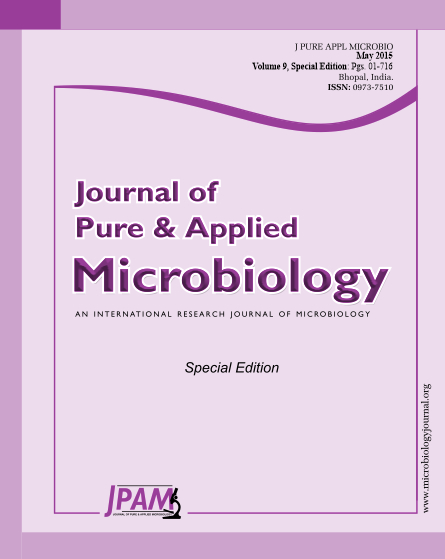The marine microalgae Chlorella salina and Nannochloropsis salina were batch-wise grown under different concentrations of fermentation liquor waste ranged from 0.5 to 2.0%. The aim was to identify the best concentration of waste that could enhance the maximum cell mass as compared to basal medium. In addition studying environmental living conditions to stimulate the growth of the tested algae. The maximum growth of Chlorella salina and Nannochloropsis salina were obtained in 1.0 and 1.75% of fermentation liquor, at temperature 25 and 30°C respectively, with light intensity 1500 Lux and under salinity concentration 30%. In order to get the maximum protein content and the optimum level of essential polyunsaturated fatty acids. The Chlorella salina was recorded the highest value of protein; on the other hand, Nannochloropsis salina was recorded highest values of polyunsaturated fatty acids (parinaric acid, eicosapentaenoic acid and docosahexaenoic acid).
Microalgae, Growth, Protein, Polyunsaturated fatty
© The Author(s) 2015. Open Access. This article is distributed under the terms of the Creative Commons Attribution 4.0 International License which permits unrestricted use, sharing, distribution, and reproduction in any medium, provided you give appropriate credit to the original author(s) and the source, provide a link to the Creative Commons license, and indicate if changes were made.


